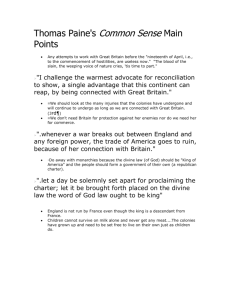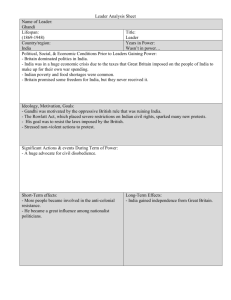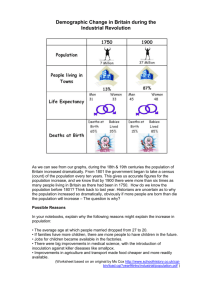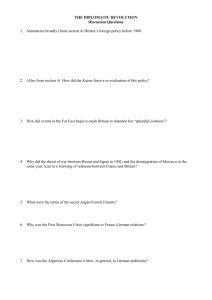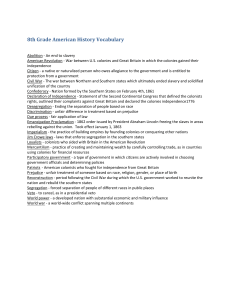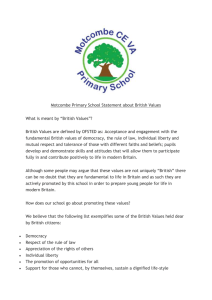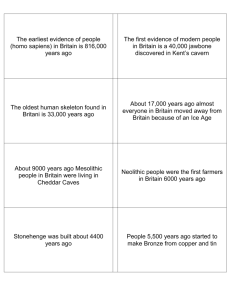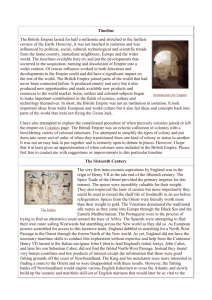Canadian-British Relations 1920s-1930s: Independence & US Influence
advertisement
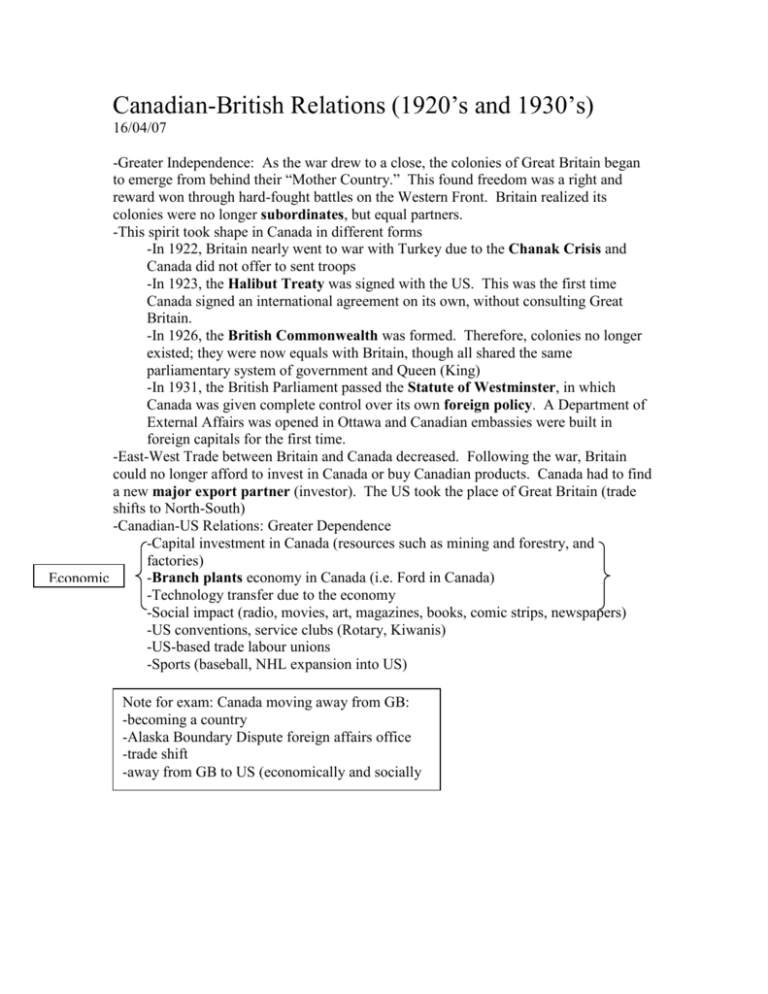
Canadian-British Relations (1920’s and 1930’s) 16/04/07 -Greater Independence: As the war drew to a close, the colonies of Great Britain began to emerge from behind their “Mother Country.” This found freedom was a right and reward won through hard-fought battles on the Western Front. Britain realized its colonies were no longer subordinates, but equal partners. -This spirit took shape in Canada in different forms -In 1922, Britain nearly went to war with Turkey due to the Chanak Crisis and Canada did not offer to sent troops -In 1923, the Halibut Treaty was signed with the US. This was the first time Canada signed an international agreement on its own, without consulting Great Britain. -In 1926, the British Commonwealth was formed. Therefore, colonies no longer existed; they were now equals with Britain, though all shared the same parliamentary system of government and Queen (King) -In 1931, the British Parliament passed the Statute of Westminster, in which Canada was given complete control over its own foreign policy. A Department of External Affairs was opened in Ottawa and Canadian embassies were built in foreign capitals for the first time. -East-West Trade between Britain and Canada decreased. Following the war, Britain could no longer afford to invest in Canada or buy Canadian products. Canada had to find a new major export partner (investor). The US took the place of Great Britain (trade shifts to North-South) -Canadian-US Relations: Greater Dependence -Capital investment in Canada (resources such as mining and forestry, and factories) -Branch plants economy in Canada (i.e. Ford in Canada) Economic -Technology transfer due to the economy -Social impact (radio, movies, art, magazines, books, comic strips, newspapers) -US conventions, service clubs (Rotary, Kiwanis) -US-based trade labour unions -Sports (baseball, NHL expansion into US) Note for exam: Canada moving away from GB: -becoming a country -Alaska Boundary Dispute foreign affairs office -trade shift -away from GB to US (economically and socially
